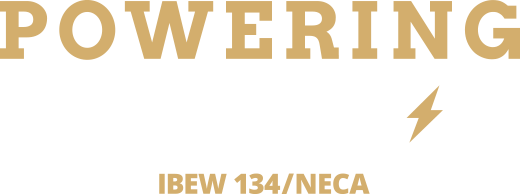A Step-by-Step Guide to Install Electric Vehicle Charging Stations
- Posted: February 23, 2022
- electric vehicle charging stations, electric vehicle supple equipment, electric vehicles, ev, evse
Before installing Electric Vehicle Supply Equipment (EVSE), commonly called charging stations or charging docks, it’s important to plan your approach.
According to Bob Hattier, Business Representative at IBEW Local 134 and Executive Director at Illinois IBEW Renewable Energy Fund, and adjunct professor at Triton College, when you’re starting to think about installing EVSE, these are a few important questions you should ask:
- Is the current electrical service capable of supplying the required power to the EVSE?
- Would the chargers be located in a safe area? Is it well lit? Is it secure?
- Would the charging equipment be protected from potential vehicle damage and weather threats that could lead to corrosion or electrical fires?
These are all questions that a qualified, licensed, union electrical contractor can assess and answer in order to create the best plan. In this article we’ll discuss the seven key steps to install electric vehicle charging stations for your business, organization, school district, municipal buildings, or other facility.
7 Key Steps to Install Electric Vehicle Charging Stations
A good EVSE contractor will be able to walk you through the process and considerations, as well as serve as a consultant for what approach makes the most sense for your organization.
Partner with a trained and licensed electrical contractor to guide you through each of these steps.
1. Assess needs with a site assessment
A site assessment, including load calculations through an audit of the existing electrical system, is best done by a qualified licensed electrical contractor. Use Powering Chicago’s Find a Contractor Tool or EVITP’s Contractor Tool to find a local provider who is trained to install EVSE.
2. Plan EV infrastructure
When planning your EV infrastructure, make sure to plan for your current needs, while allowing for future expansion. Examples of what a qualified contractor will help assess include:
- Property layout
- Level 2, AC or DC fast charging
- Number of parking spaces and chargers
- Distance to electrical service source
- Weather considerations (awnings for cooling, cord management to protect from snow plows/ice. etc.)
- Physical barriers to protect the charging stations
- Parking and charging accommodations for people with disabilities
- Lighting, security cameras
- Future capacity expansion for additional chargers down the road
- Incorporation of solar cells and battery power storage
- SMART chargers/networked chargers require broadband or Wi-Fi connectivity to function
- Select best charger brand and options
- Determine equipment requirements to facilitate installation, such as cranes, trenching, directional boring, etc.
3. Prepare construction budget proposal and installation timeline
For new additions to a property, it’s important to know your ideal budget and installation timeline. Here are a few items to consider:
- Research all available grants, rebates, and tax incentives to offset capital expenses.
- Determine the impact of product availability on installation timing.
4. Contact local utilities
In some cases, new service may need to be set up with a local power company in order to supplement the electrical infrastructure. Your qualified, union electrical contractor will be able to work with local utilities to ensure the required infrastructure is there.
5. Secure permits from local government
Some municipalities have green and solar permits. Chicago has the Green Permit Benefit Tier Program that offers qualifying projects an accelerated permit process and possible reduction of permit fees. To qualify, commercial projects in Chicago must earn certification within LEED or Green Globes rating systems or implement eligible green technologies.
6. Complete installation, commissioning, and municipal inspections
As a final step, your contractor will complete the EVSE installation, including facilitating any needed inspections.
7. Develop a maintenance plan
The EVSE connections to the vehicles are rated for 10,000 connections, but you’ll still need a qualified contractor ready for issues that may arise. Aside from routine preventive maintenance, other things can impact routine operations such as vehicular impact, wear and tear from regular usage, and weather exposure.
Plan Your EVSE Approach with Powering Chicago’s E-book
Using these seven steps as part of your comprehensive approach to installing electric vehicle charging stations helps your EVSE additions go smoothly. In Powering Chicago’s new e-book, The Time is Now: Considerations for EV Charging Infrastructure, electrical experts further guide you through the process of EV charging installation.
The e-book’s six sections include:
- Now Is The Time to Consider EV
- A Comprehensive Approach to Installing EVSE
- The Powering Chicago Difference
- Featured Projects by Powering Chicago Members
- Additional Resources
- Key Points Summary
If you’ve decided to pursue EVSE for your facility or business, and would like to learn more from Powering Chicago electrical experts, then download The Time is Now: Considerations for EV Charging Infrastructure today.

